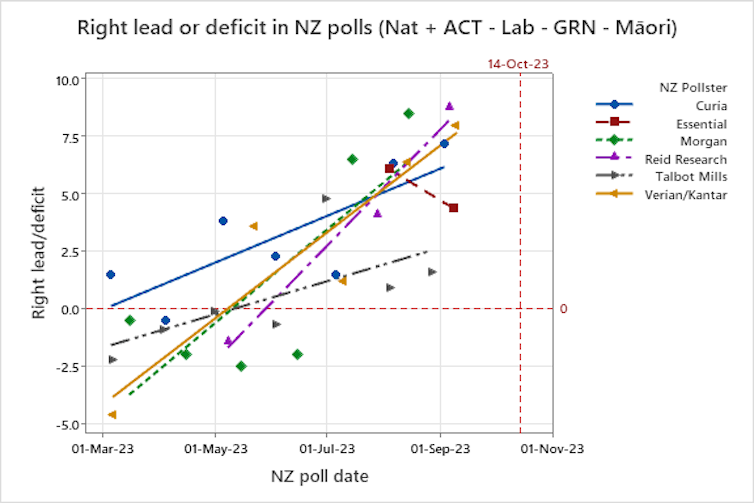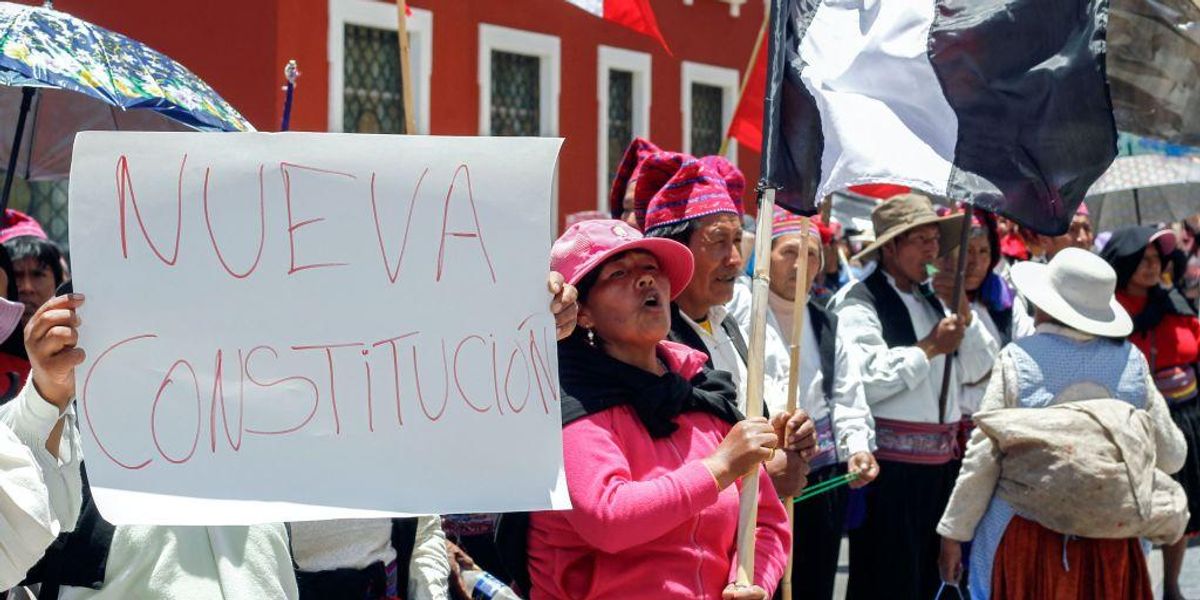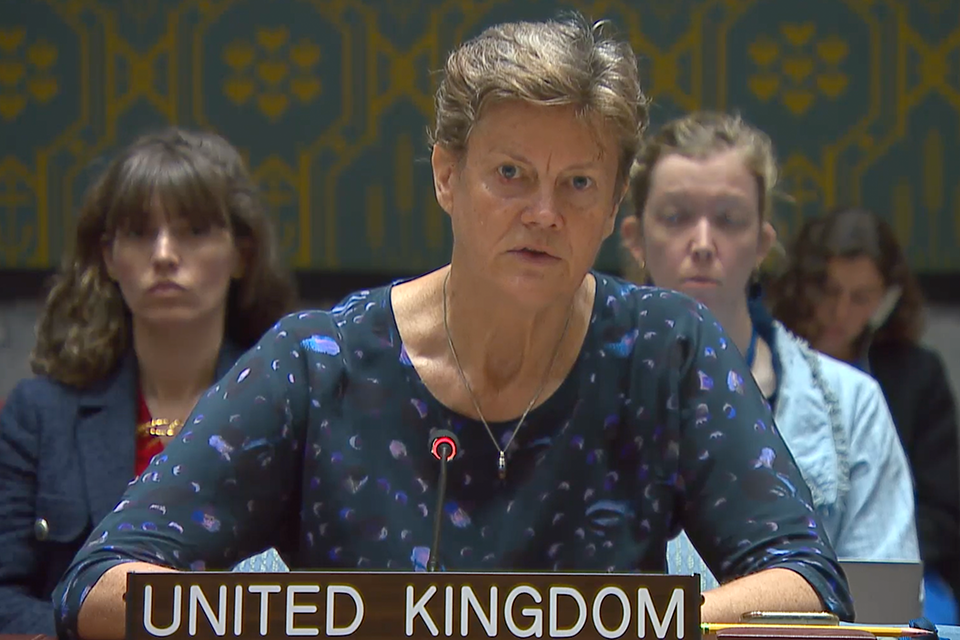The New Zealand general election to be held in one month, on October 14, will be the country’s tenth under the mixed member proportional system (MMP).
Voters have two votes: one for their party of choice, the other for their electorate’s member of parliament. There are 72 single-member seats, including seven seats for electors on the Māori roll.
Parties must win at least 5% of the total vote to gain seats in parliament. The threshold is waived if a party wins one of the electorate seats.
The 48 “list” seats are used to ensure proportionality, so that parties that win many single-member seats win few list seats. It is the party vote that matters most as it determines the number of seats a party is entitled to.
Election for single-member seats is by a first-past-the-post system. There can be more than 120 MPs (an “overhang”) if a party wins more single-member seats than its total entitlement given its party vote. An overhang last occurred at the 2014 election.
Coalitions and ‘kingmakers’
In current polls, National, Labour, ACT and the Greens are well clear of the 5% threshold. The Māori party (also known as Te Pāti Māori) is expected to win Māori-roll single-member seats and will qualify for parliamentary representation even if its party vote is below 5%.
In the past, the populist New Zealand First party has occasionally been the “kingmaker” and allied with both Labour and National governments. At the 2020 election, its party vote fell below the 5% threshold and it didn’t win any electorate seats, so was wiped out of parliament.
After the election, Christopher Luxon’s real test could come from his right – not the left
Some recent polls have New Zealand First above 5% and it’s unclear whether it will win representation after the election.
In a proportional representation system, we need to account for likely coalitions. The right coalition consists of National and ACT, while the left coalition consists of Labour, the Greens and Māori.
I am not counting New Zealand First towards either coalition as it’s unclear whether they will win representation. But the Labour Party has ruled out working with New Zealand First in coalition. No other parties are likely to win representation.
How to read the political polls: 10 things you need to know ahead of the NZ election
Clear trend to the right
The graph below shows the right coalition’s lead or deficit over the left coalition as estimated by all New Zealand pollsters that have released at least two polls since March.
The election date is shown on the graph. I started this chart in March as it was shortly after Chris Hipkins replaced Jacinda Ardern as Labour leader and prime minister in January.
The graph has poll results and a trend line for every pollster. It is similar to a graph I have been using for Australian polls on the Indigenous Voice to Parliament referendum, but uses the midpoint of polls’ fieldwork periods, not the endpoint. This is because Morgan’s New Zealand polls are taken over a whole month.
The pollster used by Television New Zealand’s 1News changed its name from Kantar Public to Verian this year. I have used “Verian/Kantar” to designate this pollster.
From March to June, polls tended to have the left coalition ahead, but there has been a surge to the right in the past two months. The trend lines for all pollsters now have the right ahead.
The Curia poll for the Taxpayers’ Union has been the right’s best poll, while Talbot Mills has been the left’s best.
The six most recent polls show an 8.5-point lead for the right in Morgan, a 1.6-point lead in Talbot Mills, a 7.2-point lead in Curia, an 8.8-point lead in Reid Research, a 4.4-point lead in Essential and an 8-point lead in Verian/Kantar. The Talbot Mills poll looks like a left-favouring outlier.
Reversal of fortune for Labour
With the right ahead in recent polls, the only realistic hope for the left would be that New Zealand First made it past the 5% threshold, which could give Labour, the Greens, Māori and New Zealand First enough seats to deny National and ACT a combined majority.
While Labour has ruled out working with New Zealand First leader Winston Peters, Labour, the Greens and New Zealand First were in a coalition government for the 2017–2020 term. If New Zealand First were again in a kingmaker role after the election, it’s plausible Labour would change its mind and make Peters an offer.
Essential and Talbot Mills both have New Zealand First above the 5% threshold and don’t have the right coalition ahead by enough to avoid needing it to form a government.
But in the other four most recent polls, the right is ahead by enough to form a government without New Zealand First, even if it makes the threshold.
The Labour-National consensus on family support means the election won’t change much for NZ’s poorest households
Why has there been a recent surge to the right? I believe Hipkins’ honeymoon after he replaced Ardern has worn off. There have been ministerial scandals, including the July 24 resignation of Labour MP Kiri Allan as justice minister after being charged with careless driving and refusing to accompany a police officer after a crash.
High inflation and cost-of-living stress will also be a contributor. Inflation was 1.1% in the June quarter, down slightly from 1.2% in March, and well below the peak of 2.2% in September 2022.
A loss for Labour would be a big reversal from its landslide victory at the 2020 election, in which the party won a one-party majority with 65 of the 120 seats. This was the first time since the current electoral system replaced first past the post in 1996 that a single party had won a parliamentary majority.
New Zealand’s success at keeping COVID out, as well as leadership turmoil within the National Party, likely contributed to that Labour victory. The 2023 election will not see the same pattern repeated on either the left or right.




